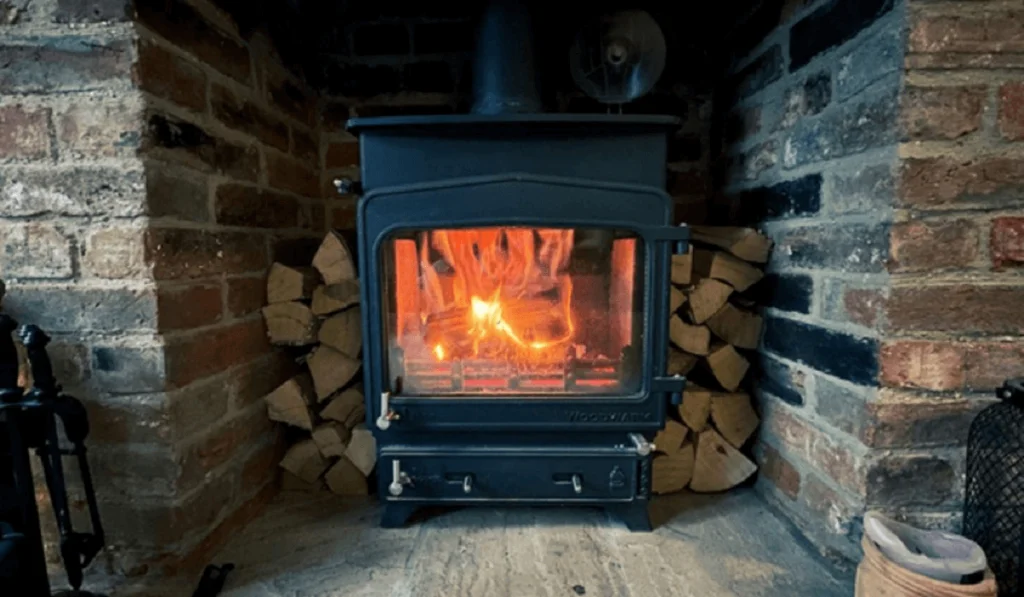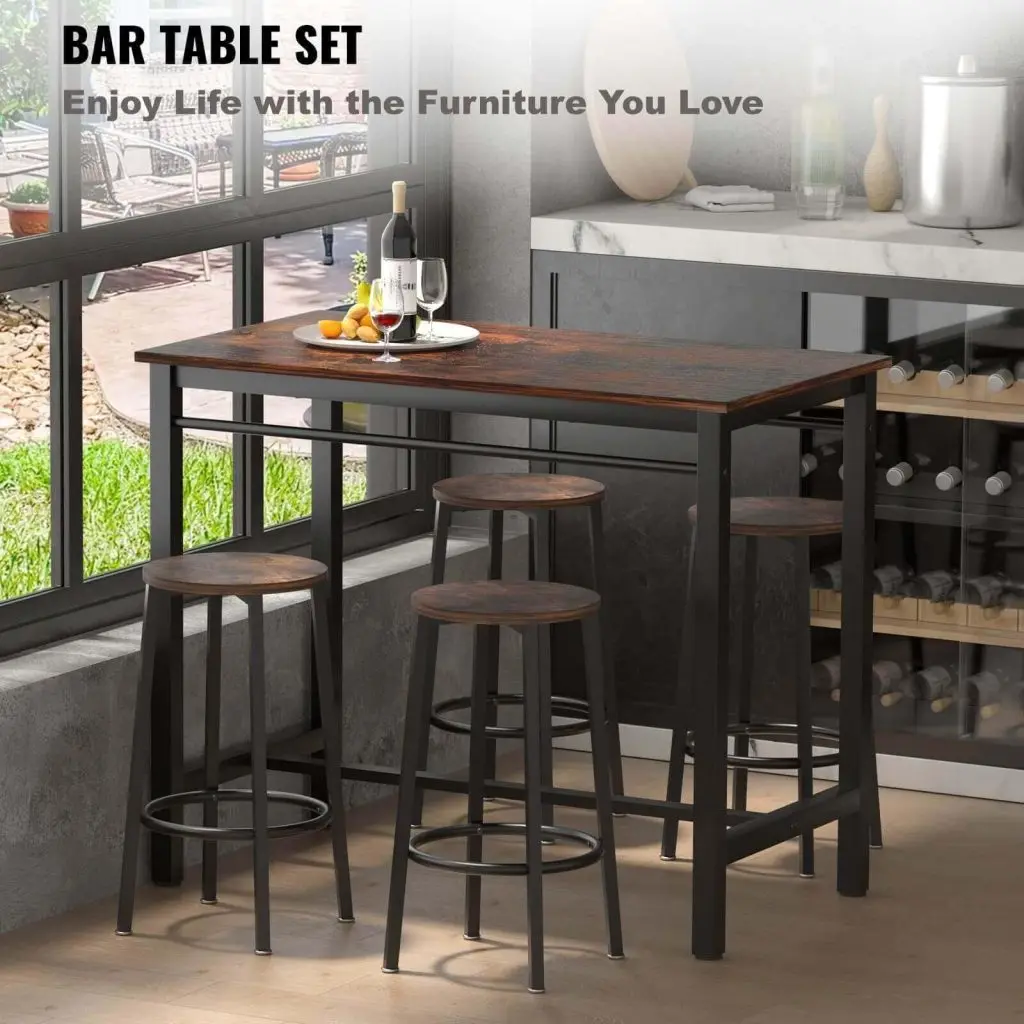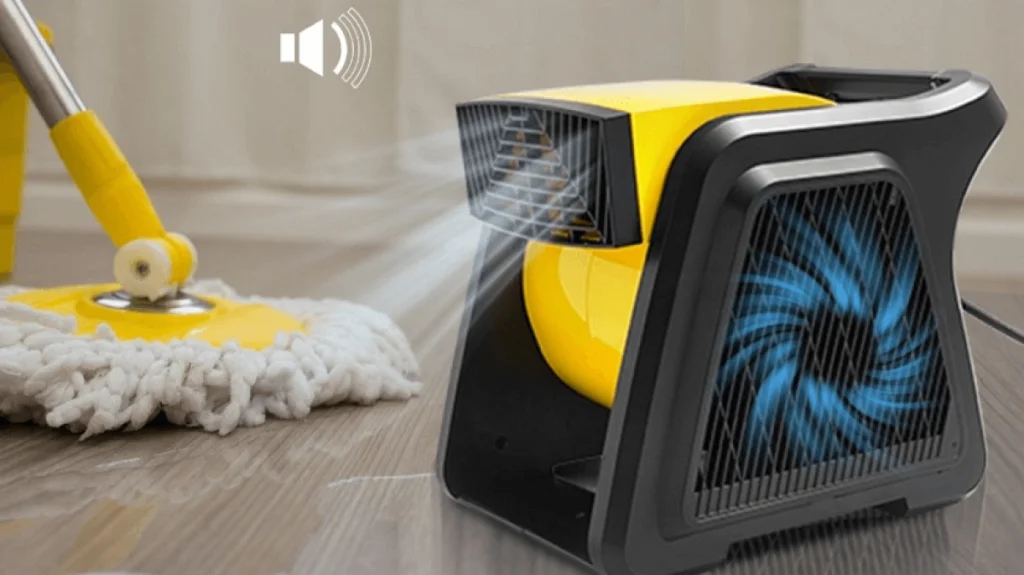Ever tried to warm your hands on a cold day by rubbing them together? It works, right? But imagine if you could wrap that warmth around your whole house. That’s the cozy embrace of using a wood stove. Lighting a wood stove requires finesse, but the reward is worth it. Once you get it down, the payoff is huge.
So, are you eager to explore the cozy world of wood stoves? Do you want to know how to use a wood-burning stove?
We’ll chop through everything from sparking your first flame to keeping that fire roaring efficiently.
Come on in—the fire’s just getting started!
Table of contents
Why Do You Need a Wood Burning Stove?
First things first. Why does one need a wood burning stove? The answer is simple. It is the gentle warmth that fills your room on a chilly evening. The captivating sound of logs crackling and the comfortable heat that fills your room on a cold night is what you get with a wood burning stove in your house.
Apart from the coziness it delivers, these stoves are champions of sustainability, turning renewable resources into heat more effectively than open fireplaces can.
Economic Advantages
You might wonder why someone would opt for this old-school method in our era full of high-tech gadgets. The answer lies within its unmatched ambiance and cost-effectiveness. Homeowners using these stoves spend less money on heating than those using oil or electric systems.
Wood-burning stoves help slice through sky-high utility bills during winter months. This rustic charmer helps cut down expenses since well-seasoned firewood typically costs less than gas or electricity—and let’s be honest, sometimes finding free timber around your property isn’t too tough either.
Sustainable Heat Source
In times when eco-friendly choices matter more than ever, picking up logs over fossil fuels helps protect Mother Earth from harmful gasses. Wood is carbon-neutral: trees absorb CO2, which balances out what’s released during combustion, which makes breathing easy while staying snug as a bug.
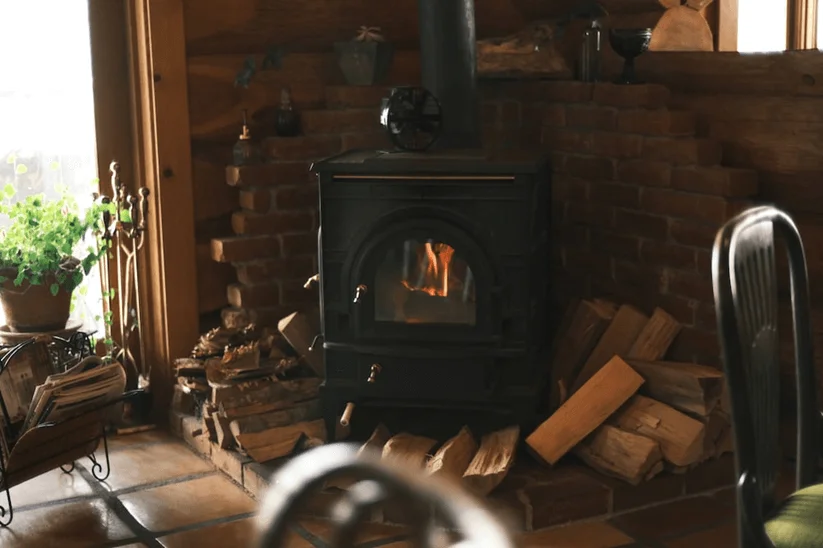
Step-by-Step: How to Use a Wood Burning Stove?
A wood burning stove can be likened to having a comforting blaze in your own living room – not just as a source of warmth but for the nostalgia it brings. But before you get those nostalgic flames crackling, let’s walk through the steps to ensure you’re doing it safely and efficiently.
Gathering Your Firewood
The kind of wood you use matters a lot. Think of firewood-like ingredients for baking bread: the better the quality, the tastier your loaf will be. Hardwoods such as oak or maple burn longer and hotter than softwoods, making them ideal for stoves. Ensure they’re dried for at least six months—for that perfect burn.
To test if the wood is ready, knock two pieces together; seasoned logs should sound hollow and feel light for their size. Remember, using damp or green wood won’t work well and can cause more smoke and buildup in your chimney.
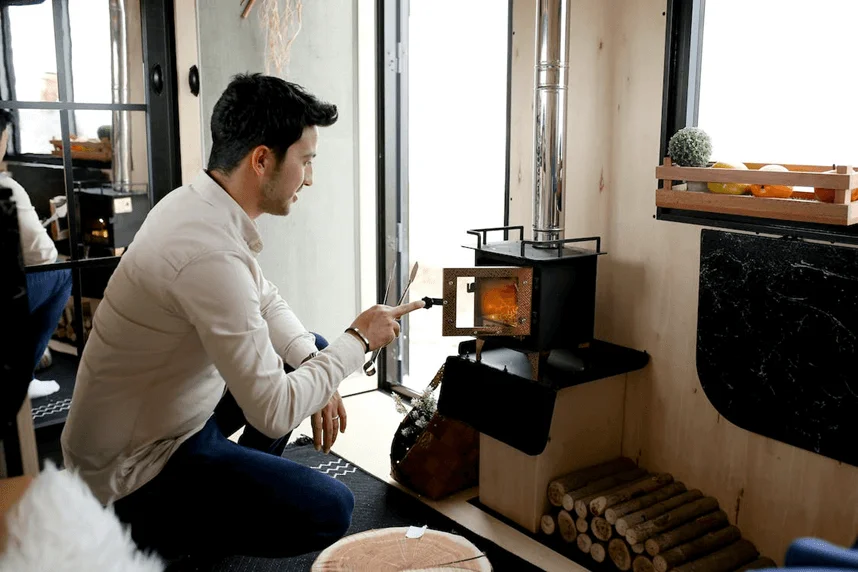
Building Your Fire
You don’t need a degree in architecture to understand how to build a fire in a wood stove. Think about small-scale construction projects here—you’re building something that needs structure yet airflow.
Start by placing larger logs on the bottom and then cross smaller sticks above them—an approach affectionately known as ‘log cabin style’. This setup lets air circulate while giving flames plenty of material to catch onto without smothering them.
In between these wooden layers, tuck some newspaper knots or natural fire starters (avoid chemicals—they’re not great for indoor air quality). Light this up from top down because hot air rises; this means less smoke billowing into your space during ignition time.
Adjusting Airflow
Your stove has vents—and they’re not just there for show. These handy features are what give you control over how fast or slow your fuel burns by regulating oxygen flow—the lifeblood of any good flame. Start with both primary (usually found below) and secondary (often above) vents open fully when igniting so that maximum oxygen gets sucked into the burner. As embers form after about 15 minutes or so, dial back on those vents gradually until the fire is established.
Maintaining The Burn
One may assume that one log equals hours of warmth but it doesn’t. One large piece might seem convenient but actually restricts airflow, leading to cooler temperatures and an inefficient burning process. Thus, adding a couple of smaller logs alongside larger ones keeps the temperatures warm all night long.
Cleaning and Maintaining Your Wood-Burning Stove
Imagine your wood-burning stove as the heart of your home, radiating warmth and comfort. But just like any hardworking heart, it needs a little TLC to pump out that cozy heat efficiently. Now that you have learned all about starting a fire in a wood stove, we will learn about the cleaning and maintaining a wood-burning stove. Here’s how to provide your stove with the maintenance it needs.
Regular Ash Removal
A clean stove is a happy stove. To maintain its cheerfulness—and safety—regularly clear away ash build-up. Once cooled, scoop those ashes into a metal container with a lid; this will prevent any stray embers from causing trouble. And don’t forget to dispose of them responsibly.
But here’s where we get crafty: did you know that wood ash can be repurposed in gardens? That’s right – sprinkle some on your plants as a natural fertilizer or pest deterrent. Talk about turning trash into treasure.
Glass Cleaning Wisdom
No one likes staring through dirty glasses, and the same goes for your stove’s glass door. For crystal-clear views of those mesmerizing flames, wipe down the glass with damp newspaper dipped in ash—a classic trick—or opt for commercial cleaners designed specifically for wood stoves if elbow grease isn’t cutting it.
Bonus tip: avoid using harsh chemicals or abrasive scrubbers that could damage the glass or sealant.
In-depth Inspection Rendezvous
Once in a while—like when seasons change—go for an in-depth inspection rendezvous. Check seals and gaskets; they should be properly sealed but not too tight. Replace them if they show signs of weariness.
You’ll also want to clean out baffle plates and air vents. Make sure nothing blocks their paths so airflow stays optimal.
The Chimney Sweep Shuffle
We all have chores we’d rather dance around than do—but sweeping your chimney shouldn’t be one of them. At least once yearly, bring in professionals who’ll deep clean the wood burning stove. They’ll ensure everything is in good shape up there so smoke exits properly every time you light up the fire.
To learn more about chimney safety and maintenance, visit Chimney Safety Institute of America. This web air quality or comfort. Let’s tackle some burning questions.
FAQs about Using a Wood Burning Stove
1. What types of wood are best for burning in a wood stove?
Picking the right kind of firewood is like choosing the finest ingredients for your grandma’s secret recipe. You want hardwoods that burn longer and hotter, such as oak, maple, and birch. Softwoods like pine may be easier to light but they burn faster – think of them as snacks rather than full meals for your stove. Plus, hardwood keeps creosote buildup at bay which means less cleaning and more relaxing by the fire.
2. Can you use a wood burning stove without a chimney?
The short answer is no – not unless “indoor campfire chic” is what you’re going for. A proper venting system isn’t just recommended; it’s non-negotiable if breathing clean air matters to you (which we hope it does.). If installing a traditional chimney sounds too daunting or pricey, a pellet stove with direct venting might just be what you need – they can often be vented horizontally through an exterior wall.
If you cannot decide what to buy, we have come to your rescue here. We have added a few camping wood stove options for you below. Having a wide variety of prices and types available will help you make an informed decision.
3. What size wood burning stove do I need?
Sizing up things properly makes all the difference between staying snug or sweating buckets. It’s all about volume: measure your room’s dimensions and chat with experts who’ll help figure out how many British Thermal Units (BTUs) will keep your house warm enough to make you live comfortably.
4. How do I maintain indoor air quality when using a wood-burning stove?
Maintaining good indoor air quality requires two key moves: Adequate ventilation plus regular maintenance checks on both wood stove and its pipes. Just like you wouldn’t skip oil changes for your car, right? It’s much akin here. Regular checkups catch problems early, and sweeping those chimneys prevents unwelcome visits from soot clouds inside.
Conclusion
Mastering how to use a wood burning stove can transform your home into a cozy haven. From choosing the right logs to lighting up, every step counts. Keep your space warm and inviting; remember, it’s all about the perfect burn.
Maintain it well, keep it clean. A tidy stove is one that’ll last through many winters. It’s simple: care for your stove and it’ll take care of you with endless warmth.
Your journey starts now; let this be the spark that ignites comfort in every corner of your home!site has plenty more tips on keeping things safe when using a wood stove.

